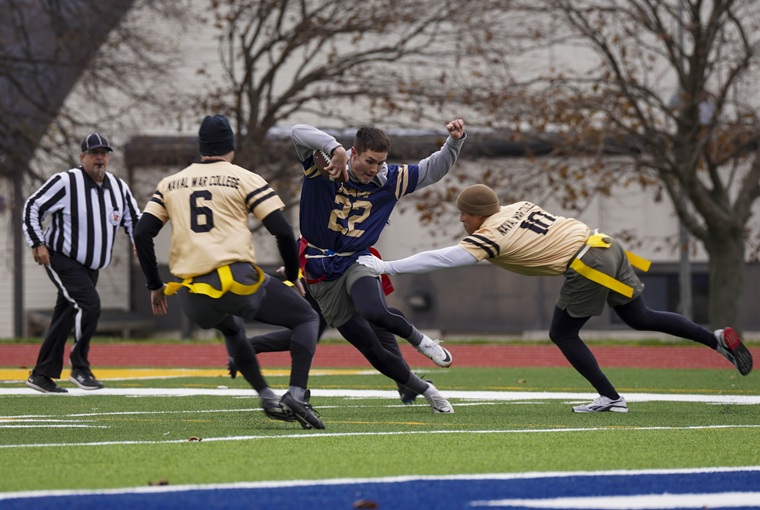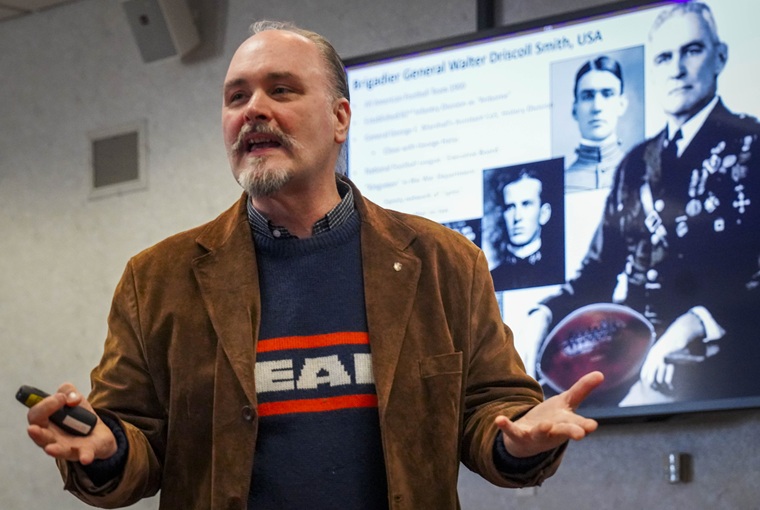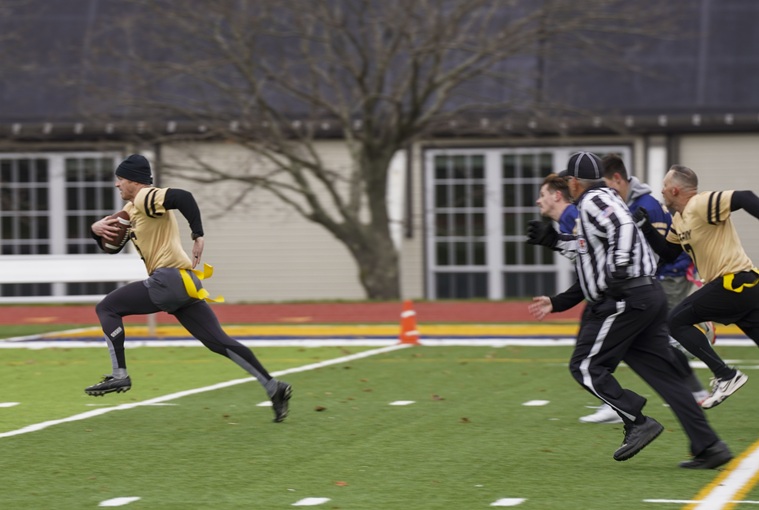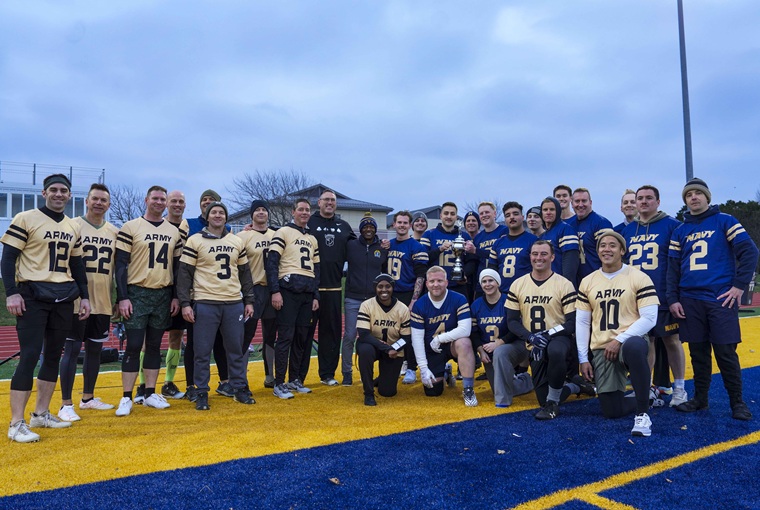U.S. Naval War College Holds Annual Army-Navy Flag Football Game, Celebrates Connection to Sport’s History

NEWPORT, R.I. – The U.S. Naval War College held its annual Army-Navy flag football game on Friday, Nov. 21, ahead of a lecture about the sport’s history, as well as the war college’s connection to its growth more than a century ago.
In the annual flag football game, held at Nimitz Field aboard Naval Station Newport in Rhode Island, a team of Navy faculty, staff and students from the NWC defeated their Army counterparts, 47-24.
The friendly competition was the latest in a local tradition at a military school that has surprising ties to the history of football, a sport that now captivates millions of fans every week in the fall, including annual rivalry games at the high school and professional levels held on the Thanksgiving holiday.
 On Monday, Nov. 24, Prof. Dave Kohnen, Captain T.B. Kittredge Historian at the Naval War College, delivered a talk about the sport and its military connections.
On Monday, Nov. 24, Prof. Dave Kohnen, Captain T.B. Kittredge Historian at the Naval War College, delivered a talk about the sport and its military connections.
Kohnen said two-time NWC President Rear Adm. William S. Sims – along with Navy football star and then-Ensign George Halas, among others – helped organize traveling Army-Navy sporting events in conjunction with Liberty Loan fundraising efforts during World War I and into the 1920s to help recoup money spent on the war effort.
In addition to Halas, the 1918 Naval Station Great Lakes “Bluejackets” football team also featured future professional football hall-of-famers John “Paddy” Driscoll and Jimmy Conzelman, and the team won the annual New Year’s Day game that would later become known as the Rose Bowl.
Halas remained enrolled in the U.S. Navy Reserve as he and several other Navy veterans helped establish the nascent Decatur Staleys professional football team. He remained closely associated with the Navy and kept regular correspondence with the war college president, Sims, during the formative stages of organizing a professional football league.
Kohnen said the entrepreneurial Halas invited Sims to provide remarks to fellow football team owners about leadership and organization.
The admiral was a natural choice for the motivational speech.
Football was an inspiration to Sims. He likened the war college’s naval wargaming to football practice, an exercise in which strategists could test out different game plans before employing them in battle.
Reflecting upon the hard lessons of past wars, Sims refocused the Naval War College.
As Sims wrote in his essay Practical Character of the NWC, the war college should devote “as much thought and energy to preparing ourselves to win battles on the sea as we do to preparing our football teams to win games on the gridiron.” He required “high-brow theoretical studies” of naval strategy to be “reduced to its simplest terms into a doctrine much like the whole repertoire of plays used in football.”
 Referencing Sims’ writings from the time, Kohnen said that Sims used “football as an analogy for explaining the fundamental purpose of the Naval War College, what he called a ‘practical forum’ for the U.S. Navy study historical foundations with an applied purpose, experiment with new ideas on the gaming floors, and then advance the future fleet.”
Referencing Sims’ writings from the time, Kohnen said that Sims used “football as an analogy for explaining the fundamental purpose of the Naval War College, what he called a ‘practical forum’ for the U.S. Navy study historical foundations with an applied purpose, experiment with new ideas on the gaming floors, and then advance the future fleet.”
So when Sims was nearby delivering Liberty Loan addresses in 1920, he agreed to meet with Halas and several professional football team owners to talk about leadership and organization, Kohnen said. The speech set the stage for follow-on meetings in Canton, Ohio, which resulted in the formation of what would become known as the National Football League.
Halas, a league founder whose team would be famously renamed the Chicago Bears, would go on to have such a longstanding influence over the sport that they named the National Football Conference championship trophy after him.
Halas and several other football team owners kept regular contact with Sims after he returned to the NWC, where the admiral wrote the book “The Victory At Sea” about his experiences in World War I and became the first U.S. Navy officer to with the Pulitzer Prize.
Sims remained in New England following his retirement from the Navy, keeping an office at the NWC and remaining active with youth sports leagues in the area. Halas, still a Navy reservist, earned a Bronze Star Medal for service in the Pacific during World War II.
The curricular reforms Sims instituted in the classroom setting, as well as the wargaming priorities he championed, continue to be a significant part of today’s Naval War College programming to this day.

